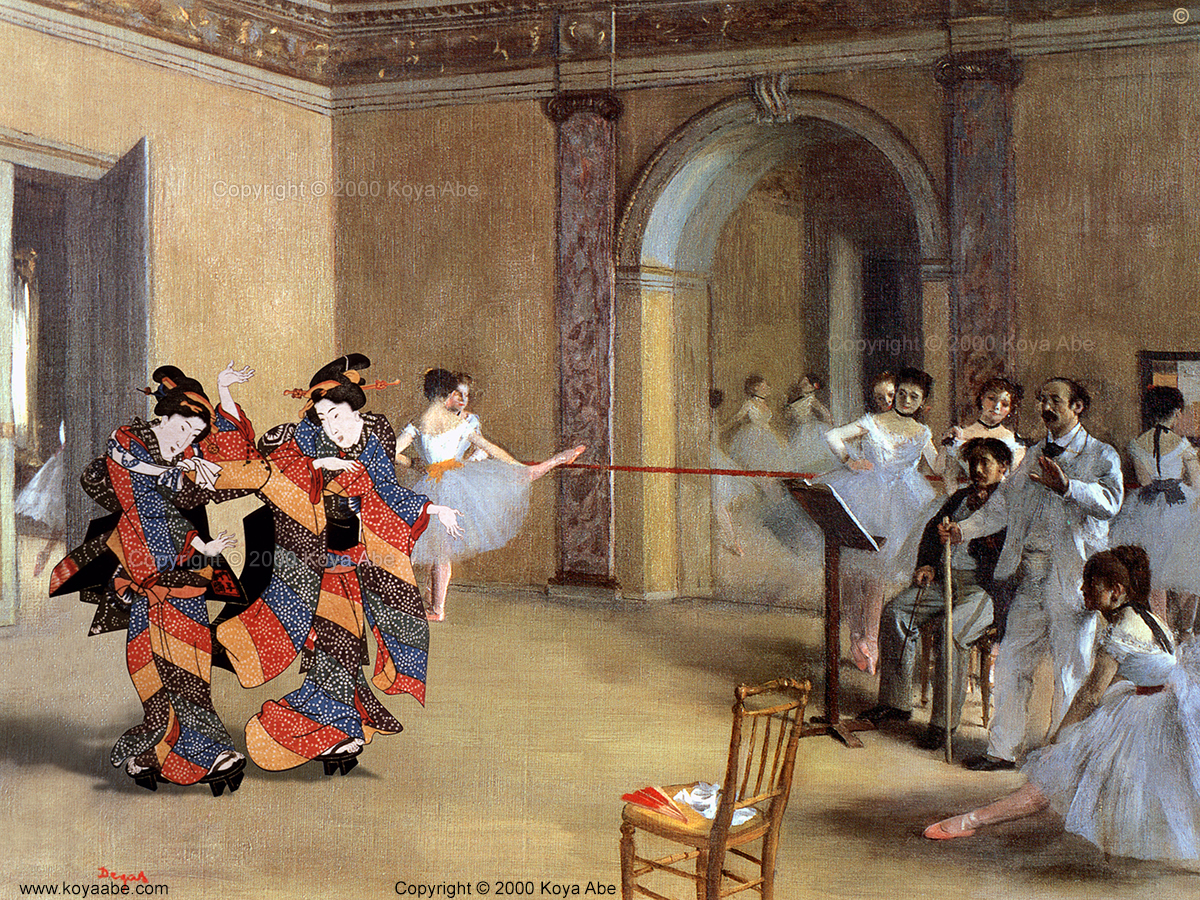When I began this project, the first matter I evaluated was the meaning of emerging media within the context of art history. This research took an unexpected amount of effort and time to develop, but ultimately I found four significant points, history, culture, media/technology and the value of art, to engage.
First I realized that the 19th century was the only period in which western art was fundamentally and significantly influenced by a non-western art form. Within the context of my perspective, this is one of the most important episodes in the history of western art. In this view, the 19th century was unique and separate from other periods of western art. As it is generally known, Japanese wood block prints, ukiyoe, were the source of this influence. As a Japanese artist, this influence was significant and became the initial reason for choosing ukiyoe images as a means to convey both historical and cultural issues.
When I began my research, considering the cultural alongside the history issues, I was aware that the concept of “culture” often exists as a comparison of differences. However, both the cultural commonalities and the cultural gaps are equally important to understanding the essence of culture. In my experience, cultural gaps and commonalities are not separate issues. They are more like the two sides of a coin, heads and tails. I believe that the key point in evaluating different cultures is by considering how the cultural disparities developed, and how and why certain values are universal to all cultures. In this cultural study, a comparison of both western and Japanese art was an ideal form, and it had led me to unite two different art heritages in my project.
While I investigated 19th century western art, I expected to recognize another significant influence along with ukiyoe, the development of photography. The effects of both of these influences occurred in the 19th century and altered later artists’ approaches to visual construction. It is not a new historical perspective, but if we recognize that ukiyoe functionally existed as photography in its time, interestingly, it is apparent that 19th century western art was in fact influenced by two types of photography. This is a very important point in the history and development of western art. Because of this, it was logical to me to utilize the digital media as a third photography when questioning the significance of this media in the context of 21st century art.
Finally, in investigating art history and media, the value of originality is an inevitable concept to consider. The concept of originality has been debated many times and is still the cause of endless arguments. Since I began this project, I realized that digital art challenges the idea of originality and this revealed the idea that the media is not just another new approach to artmaking, but more importantly, it is a new paradigm for the value of art. Digital media surpasses the concept of original/copy and does not rest upon the idea of originality to establish valuation. This concept of the character of originality its uniqueness, or the concept that all versions are either originals or copies, is an issue art has never fully experienced in its history. In developing this project, it was intriguing to assess these new boundaries and how this position affects the value of art, in all forms, original and non-original.
Copyright © Koya Abe 1997-2024. All rights are reserved.
Digital Art Chapter One copyright © 2000 Koya Abe. Digital Art Chapter One artist's statement copyright © 2000 Koya Abe. All rights are reserved.
Rights & Permissions Information
Contact us for exhibition & reproduction requests, press information, and for any other inquiries.
